Posted on
Simple
Sticks
All the way back to around 3500 BC, Egyptians and Babylonians chewed on sticks. What else did they have to do all day, back before the Internet? But it turns out that these sticks actually served a purpose. By chewing on one end until the fibers formed a small make-shift brush, people could clean the surfaces of their teeth.
Then people discovered Miswak, an herbal chewing stick with healing and antiseptic qualities. In fact, studies prove that Miswak is superior to the present day toothbrush, and many people prefer it even today! Curious? Try them out! You can buy them online here: (http://www.miswakstick.com/)
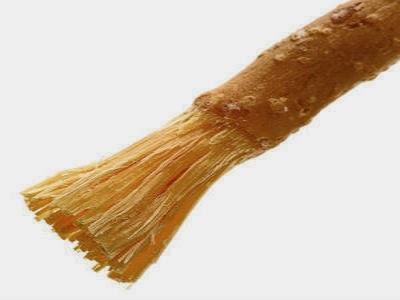
Animal Hairs
Around 1500, Chinese dentists stole the hairs right off of an animal’s back! They would pluck hairs off of cold climate pigs and paste them to a bamboo stick or animal bones.
Other primitive versions of the toothbrush include bird feathers, animal bones, porcupine quills, and boar bristles on a bamboo stick.
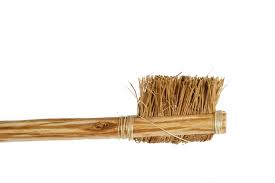
The Modern Toothbrush
Then William Addis came to save the day. As an inmate in prison, Addis used bones left over from his dinner and bristles that a generous guard provided him to create a toothbrush. Upon his release, he refined his invention to use cow tail hair drilled and tied to a cow bone. He then began mass producing his toothbrush and selling it all over the world.
His company still exists today, although they’ve moved beyond oral hygiene.
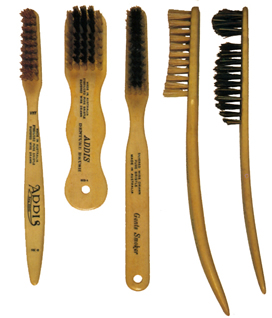
The World Wars
Isn’t it hard to believe that the daily routine of brushing your teeth, as we know it today, began such a short time ago?
Brushing your teeth only became popular in the US after soldiers returned home. During the war, our government had strict requirements for soldiers regarding their oral hygiene. Brushing your teeth was a hard habit to break, and soldiers brought it home with them.
During the war, bones weren’t always easy to come by, so handles were made from celluloid. Then, in 1938, a company called DuPont de Nemours introduced the first nylon bristles. DuPont de Nemours used a support-the-troops marketing campaign, and people were hooked.
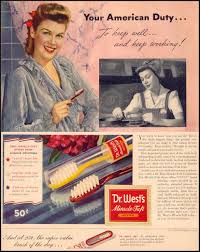
Electric Toothbrushes
Even though it seems like electric toothbrushes are a more recent fad, the first one was invented in Switzerland in 1939, but it wasn’t introduced to the public market until the 1960s.
Originally, electric toothbrushes were intended for the “overly-vigorous type of toothbrushers.”
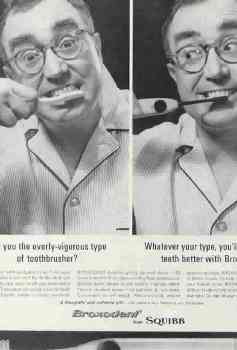
What can your toothbrush do?
Today, there are over 3000 patents for toothbrushes, and they can do just about anything you want them to do.
The Oral-B Triumph 9100 with SmartGuide wirelessly transmits a map of your mouth to an LCD display and then tells you where you still need to brush and areas that need more attention.
Tooth Tunes uses sound waves to play a song for 2 minutes. Once the song is over, you know when to stop.
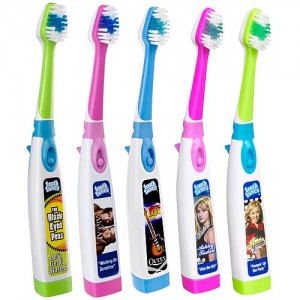
Today, you could spend hours in the toothbrush aisle mulling over all of the choices. Which toothbrush do you think is the best? Which one gets your kid excited to brush their teeth? Does yours do any cool tricks?
All the way back to around 3500 BC, Egyptians and Babylonians chewed on sticks. What else did they have to do all day, back before the Internet? But it turns out that these sticks actually served a purpose. By chewing on one end until the fibers formed a small make-shift brush, people could clean the surfaces of their teeth.
Then people discovered Miswak, an herbal chewing stick with healing and antiseptic qualities. In fact, studies prove that Miswak is superior to the present day toothbrush, and many people prefer it even today! Curious? Try them out! You can buy them online here: (http://www.miswakstick.com/)

Animal Hairs
Around 1500, Chinese dentists stole the hairs right off of an animal’s back! They would pluck hairs off of cold climate pigs and paste them to a bamboo stick or animal bones.
Other primitive versions of the toothbrush include bird feathers, animal bones, porcupine quills, and boar bristles on a bamboo stick.

The Modern Toothbrush
Then William Addis came to save the day. As an inmate in prison, Addis used bones left over from his dinner and bristles that a generous guard provided him to create a toothbrush. Upon his release, he refined his invention to use cow tail hair drilled and tied to a cow bone. He then began mass producing his toothbrush and selling it all over the world.
His company still exists today, although they’ve moved beyond oral hygiene.

The World Wars
Isn’t it hard to believe that the daily routine of brushing your teeth, as we know it today, began such a short time ago?
Brushing your teeth only became popular in the US after soldiers returned home. During the war, our government had strict requirements for soldiers regarding their oral hygiene. Brushing your teeth was a hard habit to break, and soldiers brought it home with them.
During the war, bones weren’t always easy to come by, so handles were made from celluloid. Then, in 1938, a company called DuPont de Nemours introduced the first nylon bristles. DuPont de Nemours used a support-the-troops marketing campaign, and people were hooked.

Electric Toothbrushes
Even though it seems like electric toothbrushes are a more recent fad, the first one was invented in Switzerland in 1939, but it wasn’t introduced to the public market until the 1960s.
Originally, electric toothbrushes were intended for the “overly-vigorous type of toothbrushers.”

What can your toothbrush do?
Today, there are over 3000 patents for toothbrushes, and they can do just about anything you want them to do.
The Oral-B Triumph 9100 with SmartGuide wirelessly transmits a map of your mouth to an LCD display and then tells you where you still need to brush and areas that need more attention.
Tooth Tunes uses sound waves to play a song for 2 minutes. Once the song is over, you know when to stop.

Today, you could spend hours in the toothbrush aisle mulling over all of the choices. Which toothbrush do you think is the best? Which one gets your kid excited to brush their teeth? Does yours do any cool tricks?
1-877-Dr Teeth- (360) 740-6212
Town Center Dental
3 Locations - Chehalis, Wa -- Rochester, Wa -- Rainier,
Or

